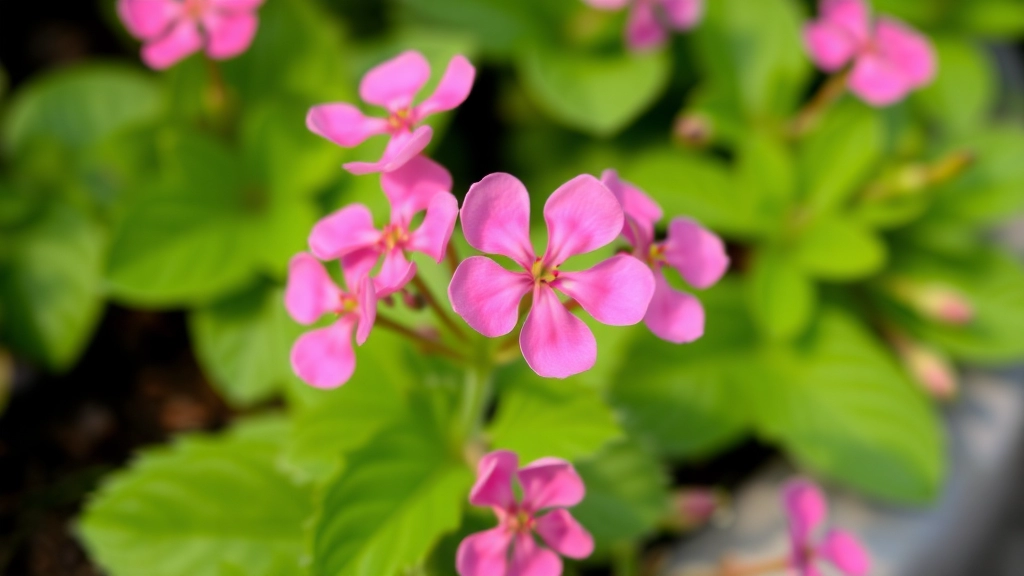Caring for a Pink Butterfly Kalanchoe
Ever wondered how to care for a Pink Butterfly Kalanchoe? You’re in the right place. This vibrant succulent is not just a visual delight but also easy to maintain. Whether you’re a seasoned gardener or a newbie, I’ve got some straightforward tips to help you keep your plant thriving.
Essential Care Tips
- Light: Make sure your Pink Butterfly Kalanchoe gets plenty of bright, indirect sunlight.
- Water: Water it sparingly—overwatering can be a killer.
- Soil: Use well-draining soil to prevent root rot.
Follow these steps, and you’ll have a healthy, beautiful plant to enjoy.
Overview of Pink Butterfly Kalanchoe
Are you searching for a vibrant addition to your indoor or outdoor garden? The Pink Butterfly Kalanchoe might just be what you need.
This stunning succulent, scientifically known as Kalanchoe luciae, is celebrated for its unique, butterfly-shaped leaves that transition from green to a striking pink hue, especially when exposed to sunlight.
The Pink Butterfly Kalanchoe is not just a feast for the eyes; it’s also a low-maintenance plant that thrives in various conditions.
Key Characteristics:
- Leaf Shape: Resembles butterfly wings.
- Colour: Green with pink edges, intensifying in sunlight.
- Growth Habit: Compact and bushy, making it perfect for pots or garden beds.
Whether you’re a novice gardener or a seasoned plant enthusiast, the Pink Butterfly Kalanchoe offers a delightful way to brighten up your space. For more detailed care instructions, check out our complete care guide for Kalanchoe Daigremontiana Pink Butterflies. Additionally, if you’re concerned about safety, learn about the toxicity and safety tips for Pink Butterfly Kalanchoe.
Unique Features and Appearance of Pink Butterfly Kalanchoe
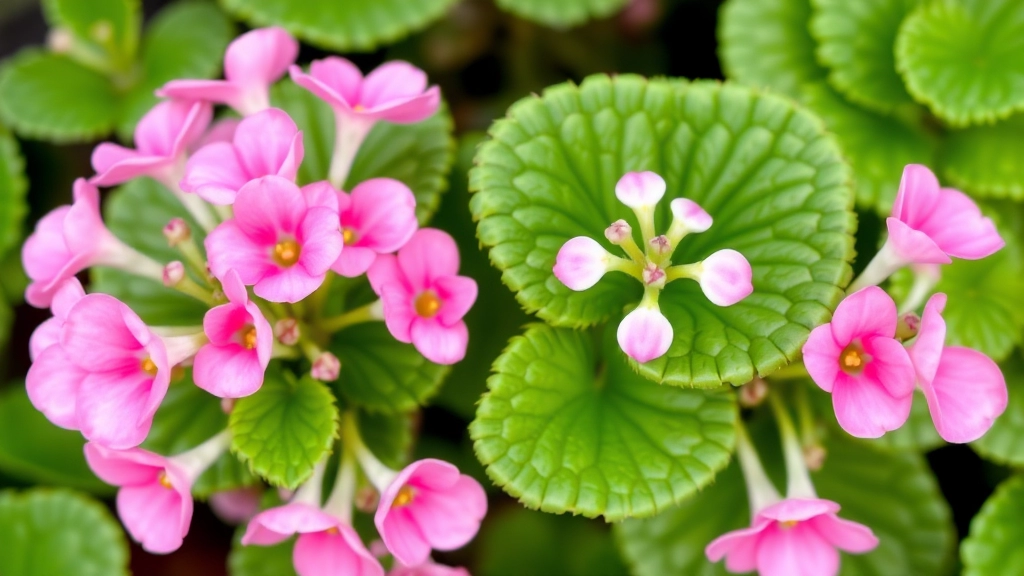
Have you ever come across a plant that instantly brightens your day? The Pink Butterfly Kalanchoe does just that!
This charming succulent is known for its stunning, butterfly-shaped leaves that boast a delightful blush pink hue.
Eye-Catching Leaves
- Shape: The leaves are thick and fleshy, resembling delicate butterfly wings.
- Colour: They range from soft pink to vibrant fuchsia, making them a standout in any collection.
- Texture: You’ll love the smooth, glossy finish that catches the light beautifully.
Blossoms That Steal the Show
But it’s not just the leaves that grab your attention.
- Flowers: The Pink Butterfly Kalanchoe produces clusters of small, tubular flowers that bloom in a variety of colours, including pink, red, and white.
- Blooming Season: Typically, you can expect a spectacular show from late winter to early spring.
Size and Growth Habit
- Height: This plant generally grows to about 30-45 cm tall.
- Spread: Its compact nature makes it perfect for small spaces or as part of a larger arrangement.
Ideal Growing Conditions for Pink Butterfly Kalanchoe
When considering the ideal growing conditions for Pink Butterfly Kalanchoe, it’s essential to address common concerns such as light, temperature, and soil requirements.
Planting and Propagation Tips
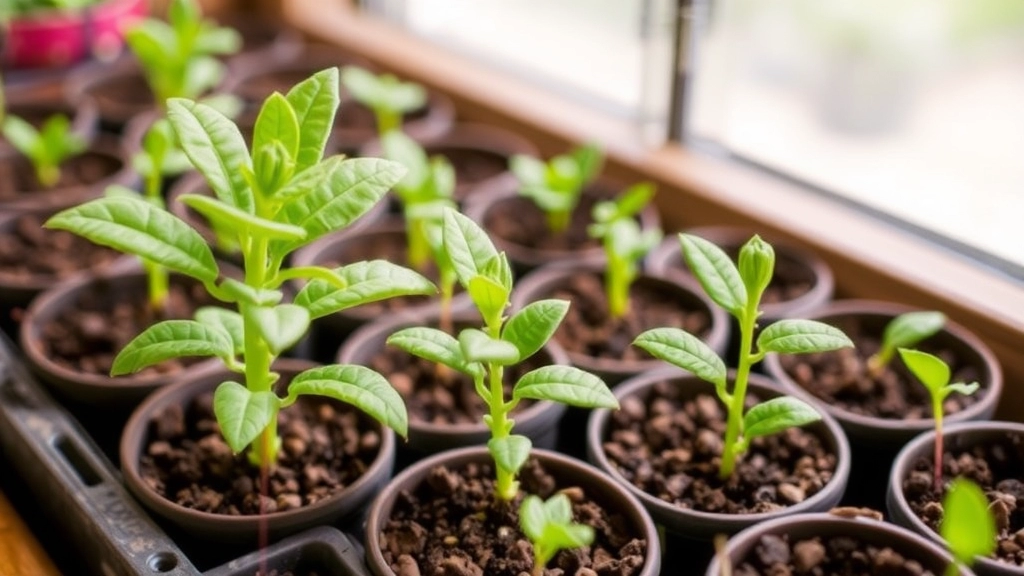
When it comes to planting and propagating your Pink Butterfly Kalanchoe, many enthusiasts often wonder about the best methods to ensure healthy growth and vibrant blooms.
Choosing the Right Soil
- Well-draining soil is crucial. A mix designed for succulents or cacti works wonders.
- You can create your own blend using:
- 50% potting soil
- 25% perlite
- 25% sand
Ideal Pot Selection
- Terracotta pots are preferred as they allow for better airflow and moisture control.
- Ensure that your pot has drainage holes to prevent waterlogging.
Propagation Methods
Propagating Pink Butterfly Kalanchoe is straightforward and can be done through:
- Leaf Cuttings:
- Select a healthy leaf.
- Allow it to dry for a day or two to form a callus.
- Place it in soil, ensuring it’s partially buried.
- Offsets:
- Look for small plantlets at the base.
- Gently separate them and replant in their own pots.
Timing for Planting
The best time to plant or propagate is during spring or early summer when the plant is actively growing.
Light and Temperature Considerations
- Place your newly planted or propagated Kalanchoe in a bright spot with indirect sunlight.
- Ideal temperatures range from 18°C to 24°C, so avoid cold drafts.
Watering and Maintenance
Are you worried about how much water your Pink Butterfly Kalanchoe needs?
Maintaining the right watering routine is crucial for the health of this vibrant succulent.
Common Pests and Diseases
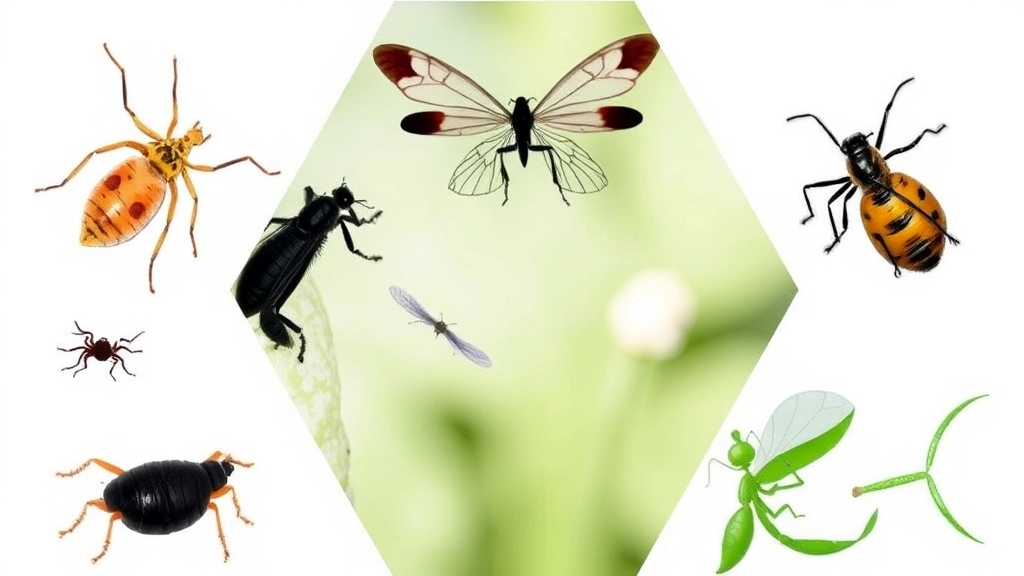
So, you’ve got your Pink Butterfly Kalanchoe thriving, but what happens if it starts to look a bit off?
Let’s dive into some common pests and diseases that can cause a bit of trouble for your beautiful plant.
Common Pests
- Mealybugs
- These little white cottony bugs love to hide in the leaf joints.
- You might notice a sticky residue or a web-like substance.
- Tip: Wipe them off with a cotton swab dipped in alcohol.
- Spider Mites
- Tiny and often invisible, these pests suck the sap from your plant.
- Look for fine webbing on the leaves.
- Tip: Increase humidity around your plant to deter them.
- Aphids
- These green or black bugs can cluster on new growth.
- They can cause leaves to curl and stunt growth.
- Tip: Spray them off with a strong stream of water.
Common Diseases
- Root Rot
- Overwatering can lead to this nasty issue.
- Symptoms include yellowing leaves and a mushy stem.
- Tip: Ensure your pot has drainage holes and let the soil dry out between waterings.
- Powdery Mildew
- This white, powdery substance can appear on leaves.
- It thrives in humid conditions.
- Tip: Improve air circulation and avoid overhead watering.
- Leaf Spot
- Dark spots on leaves can indicate fungal infections.
- They can spread quickly if not treated.
- Tip: Remove affected leaves and avoid wetting the foliage.
Seasonal Care Guide for Pink Butterfly Kalanchoe
As we delve into the seasonal care of the Pink Butterfly Kalanchoe, it’s essential to understand how this beautiful plant responds throughout the year.
Spring: Awakening and Growth
In spring, the Pink Butterfly Kalanchoe begins to thrive as temperatures rise.
- Light: Ensure it receives bright, indirect sunlight.
- Fertilising: Apply a balanced fertiliser every four weeks to support growth.
- Repotting: Consider repotting if the plant has outgrown its container.
Summer: Peak Performance
During summer, your Kalanchoe will be in full bloom, showcasing its vibrant leaves and flowers.
- Watering: Increase watering frequency, ensuring the soil dries out between sessions.
- Humidity: Maintain moderate humidity levels to prevent leaf drop.
- Pest Vigilance: Keep an eye out for aphids and mealybugs.
Autumn: Preparation for Dormancy
As autumn approaches, your Kalanchoe will start to slow down.
- Light Adjustment: Gradually reduce direct sunlight exposure.
- Watering: Cut back on watering, allowing the soil to dry out more between sessions.
- Pruning: Trim any dead or wilted leaves to encourage healthy growth.
Winter: Rest Period
In winter, the Pink Butterfly Kalanchoe enters a dormant phase.
- Light: Place it in a bright spot, but avoid direct sunlight.
- Watering: Water sparingly, only when the soil is completely dry.
- Temperature: Keep it in a warm environment, ideally above 10°C.
When it comes to the Pink Butterfly Kalanchoe, one of the big questions I often hear is: “Should I keep it indoors or plant it outside?”
Let’s break it down.
Indoor Growing
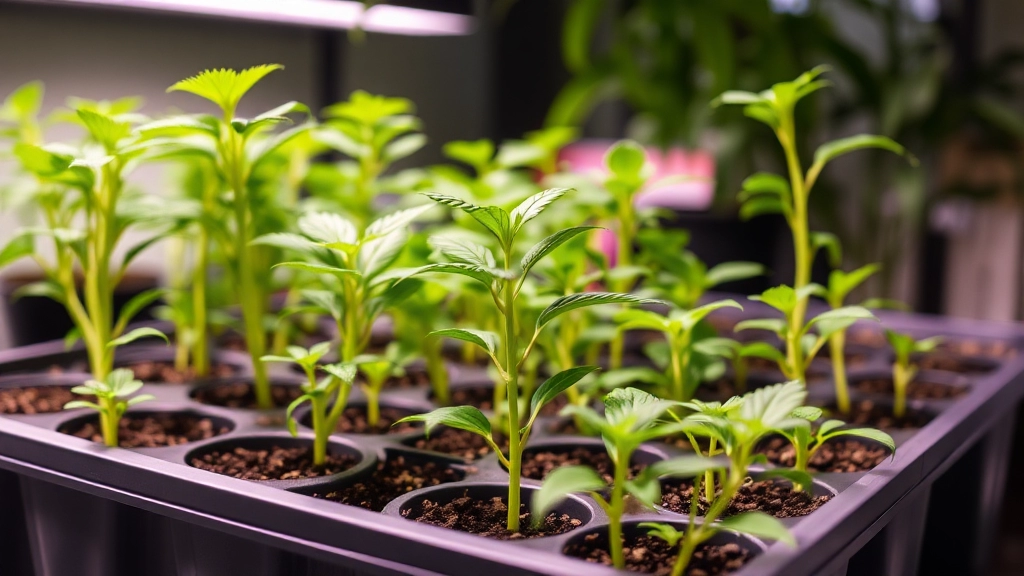
Growing your Pink Butterfly Kalanchoe indoors can be a fantastic option if you live in a cooler climate or just prefer the convenience of having it close by.
Benefits of Indoor Growing:
- Controlled Environment: You can manage temperature and humidity easily.
- Less Exposure to Pests: Indoor plants face fewer threats from insects and diseases.
- Decorative Touch: They brighten up any room with their vibrant colours.
However, you’ve got to consider:
- Light Requirements: Ensure it gets plenty of bright, indirect sunlight. A south-facing window is ideal.
- Temperature: Keep it in a warm spot, ideally between 18-24°C (65-75°F).
- Humidity Levels: Indoor air can be dry, especially in winter. A little misting can help.
Outdoor Growing
On the flip side, if you have a garden or balcony, growing your Kalanchoe outside can be equally rewarding.
Benefits of Outdoor Growing:
- Natural Light: Sunlight is abundant, promoting healthier growth.
- Space to Expand: You can create a lovely garden display with multiple plants.
- Pollinator Friendly: Attracts bees and butterflies, enhancing your garden’s ecosystem.
But, keep in mind:
- Climate Considerations: Ensure your area doesn’t get too cold. These plants thrive in warm, sunny conditions.
- Soil Quality: Well-draining soil is crucial to prevent root rot.
- Protection from Elements: Be mindful of heavy rain or strong winds. You may need to provide some shelter.
Making the Choice
Ultimately, the decision between indoor and outdoor growing comes down to your personal preference and local climate.
Are you looking for a pop of colour inside your home, or do you want to create a vibrant garden scene?
Benefits of Pink Butterfly Kalanchoe
As we explore the advantages of incorporating Pink Butterfly Kalanchoe into your plant collection, it’s essential to recognise how this unique succulent can enhance both your indoor and outdoor spaces.
Aesthetic Appeal
One of the most striking benefits of Pink Butterfly Kalanchoe is its stunning appearance.
- The vibrant pink flowers add a pop of colour to any setting.
- Its unique leaf shape and texture create visual interest year-round.
- Perfect for both modern and traditional decor styles.
Low Maintenance
For those who might worry about upkeep, this plant is a dream.
- Requires minimal watering, making it ideal for busy lifestyles.
- Thrives in various light conditions, from bright indoor spots to partial shade outdoors.
- Resilient to drought, which means it can survive even if you forget to water it occasionally.
Air Purification
Did you know that having houseplants can improve indoor air quality?
- Pink Butterfly Kalanchoe helps filter out toxins, contributing to a healthier living environment.
- Its ability to produce oxygen during the day can enhance your overall well-being.
Versatility
This plant is not just for show; it serves multiple purposes.
- Ideal for gifting, especially during special occasions like birthdays or housewarming parties.
- Can be used in arrangements or as a standalone piece to brighten up any room or garden.
Health Benefits
Beyond aesthetics, there are some health perks too.
Popular Varieties and Hybrids of Pink Butterfly Kalanchoe
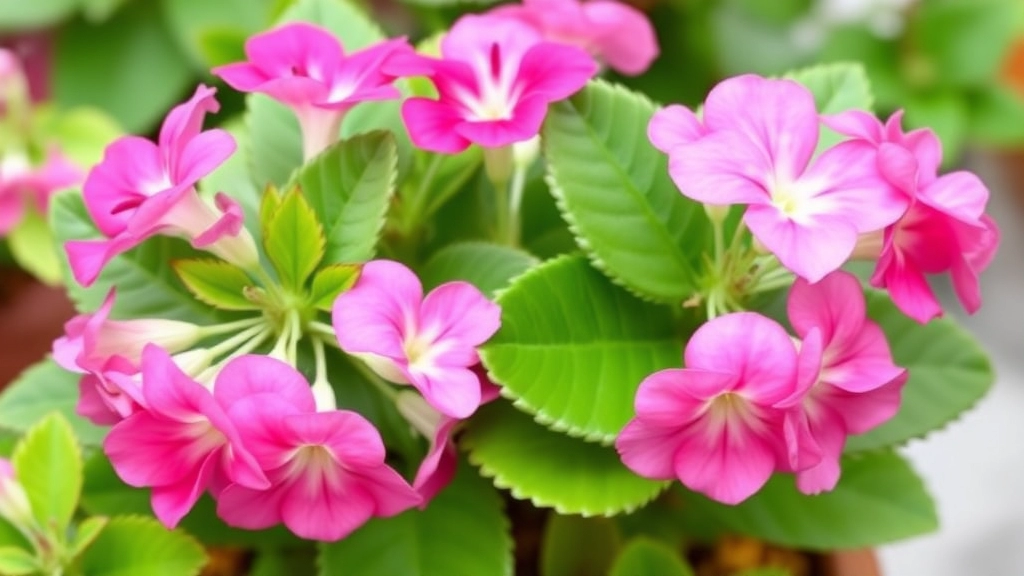
So, you’ve fallen for the charm of the Pink Butterfly Kalanchoe, and now you’re curious about the different varieties and hybrids out there.
You’re not alone! Many plant lovers want to explore the unique options available.
Here’s a quick rundown of some popular varieties and hybrids that you might want to consider adding to your collection:
- Kalanchoe luciae: This is the classic Pink Butterfly variety. Its leaves are a stunning mix of green and pink, resembling butterfly wings.
- Kalanchoe blossfeldiana: Known for its vibrant flowers, this hybrid can also feature the iconic pink tones. It’s a crowd-pleaser!
- Kalanchoe ‘Pink Butterflies’: This one takes the cake for its beautiful leaf shape and stunning colour. Perfect for brightening up any space.
- Kalanchoe tomentosa: Often called Panda Plant, it has fuzzy leaves with a hint of pink. A quirky addition to your plant family!
Each of these varieties brings its own flair to the table, making them great conversation starters.
Why Choose Different Varieties?
Choosing a variety can be about personal preference or the specific vibe you want to create in your home or garden.
- Aesthetic Appeal: Different leaf shapes and colours can enhance your decor.
- Care Requirements: Some might be easier to care for than others, depending on your experience level.
- Flowering Potential: If you love blooms, certain hybrids will give you more flowers throughout the year.
Exploring these options can be a fun journey, just like finding the perfect coffee shop that suits your mood.
Troubleshooting Common Issues
When it comes to caring for your Pink Butterfly Kalanchoe, you may face some challenges along the way.
Here are some common issues and how to tackle them:
-
Leaves Dropping:
- Causes: Overwatering or underwatering.
- Solution: Check the soil moisture. If it’s soggy, reduce watering; if it’s dry, give it a drink.
-
Pale or Yellowing Leaves:
- Causes: Lack of sunlight or nutrient deficiency.
- Solution: Move your plant to a brighter spot and consider fertilising with a balanced succulent food.
-
Leggy Growth:
- Causes: Insufficient light.
- Solution: Increase light exposure. Kalanchoes thrive in bright, indirect sunlight.
-
Brown Leaf Tips:
- Causes: Low humidity or underwatering.
- Solution: Mist your plant occasionally or place it on a pebble tray with water to boost humidity.
-
Pests:
- Causes: Aphids, mealybugs, or spider mites can invade.
- Solution: Inspect leaves regularly. Use insecticidal soap or neem oil to treat infestations.
By addressing these common issues promptly, you can keep your Pink Butterfly Kalanchoe thriving. For more detailed care tips, check out our Kalanchoe Pink Butterflies Care Guide and learn about the best practices for growing and caring for Kalanchoe Pink Butterflies.
FAQs About Pink Butterfly Kalanchoe
What makes the Pink Butterfly Kalanchoe unique?
The Pink Butterfly Kalanchoe is renowned for its stunning, butterfly-shaped leaves that come in a delightful blush pink hue. Its leaves are thick, fleshy, and have a smooth, glossy finish. Additionally, it produces clusters of small, tubular flowers in various colors, including pink, red, and white, typically blooming from late winter to early spring.
What type of soil is best for Pink Butterfly Kalanchoe?
Well-draining soil is crucial for the healthy growth of Pink Butterfly Kalanchoe. A mix designed for succulents or cacti works wonders. You can also create your own blend using 50% potting soil, 25% perlite, and 25% sand.
What kind of pot should I use for my Pink Butterfly Kalanchoe?
Terracotta pots are preferred as they allow for better airflow and moisture control. Ensure that your pot has drainage holes to prevent waterlogging, which can lead to root rot.
How can I propagate my Pink Butterfly Kalanchoe?
Propagating Pink Butterfly Kalanchoe can be done through leaf cuttings or offsets. For leaf cuttings, select a healthy leaf, let it dry for a day or two to form a callus, then place it in soil. For offsets, gently separate the small plantlets at the base and replant them in their own pots.
When is the best time to plant or propagate Pink Butterfly Kalanchoe?
The best time to plant or propagate Pink Butterfly Kalanchoe is during spring or early summer when the plant is actively growing.
What are the light and temperature requirements for Pink Butterfly Kalanchoe?
Place your Pink Butterfly Kalanchoe in a bright spot with indirect sunlight. Ideal temperatures range from 18°C to 24°C (65°F to 75°F). Avoid exposing the plant to cold drafts.
What are the common pests that affect Pink Butterfly Kalanchoe?
Common pests include mealybugs, spider mites, and aphids. Mealybugs can be wiped off with a cotton swab dipped in alcohol. Spider mites can be deterred by increasing humidity, and aphids can be sprayed off with a strong stream of water.
What are the common diseases that affect Pink Butterfly Kalanchoe?
Common diseases include root rot, powdery mildew, and leaf spot. Root rot can be prevented by ensuring proper drainage and allowing the soil to dry out between waterings. Powdery mildew can be managed by improving air circulation and avoiding overhead watering. Leaf spot can be treated by removing affected leaves and avoiding wetting the foliage.
Can I grow Pink Butterfly Kalanchoe indoors?
Yes, growing Pink Butterfly Kalanchoe indoors is a fantastic option, especially in cooler climates. Benefits include a controlled environment, less exposure to pests, and a decorative touch. Ensure it gets plenty of bright, indirect sunlight, and maintain a warm temperature between 18-24°C (65-75°F).
Can I grow Pink Butterfly Kalanchoe outdoors?
Yes, growing Pink Butterfly Kalanchoe outdoors is also rewarding. Benefits include abundant natural light, space to expand, and attracting pollinators like bees and butterflies. Ensure your area doesn’t get too cold, use well-draining soil, and provide protection from heavy rain or strong winds.
What are some popular varieties and hybrids of Pink Butterfly Kalanchoe?
Popular varieties and hybrids include:
- Kalanchoe luciae: Classic Pink Butterfly variety with green and pink leaves.
- Kalanchoe blossfeldiana: Known for its vibrant flowers and pink tones.
- Kalanchoe ‘Pink Butterflies’: Features beautiful leaf shape and stunning color.
- Kalanchoe tomentosa: Also called Panda Plant, with fuzzy leaves and a hint of pink.
Why should I choose different varieties of Pink Butterfly Kalanchoe?
Choosing different varieties can enhance your decor with various leaf shapes and colors, meet specific care requirements based on your experience level, and offer more flowering potential if you love blooms.
References
-
Common Kalanchoe Problems: Learn About Diseases Of Kalanchoe
-
Pink Butterfly Kalanchoe: A Complete Care Guide
-
How to Grow and Care for Kalanchoe
